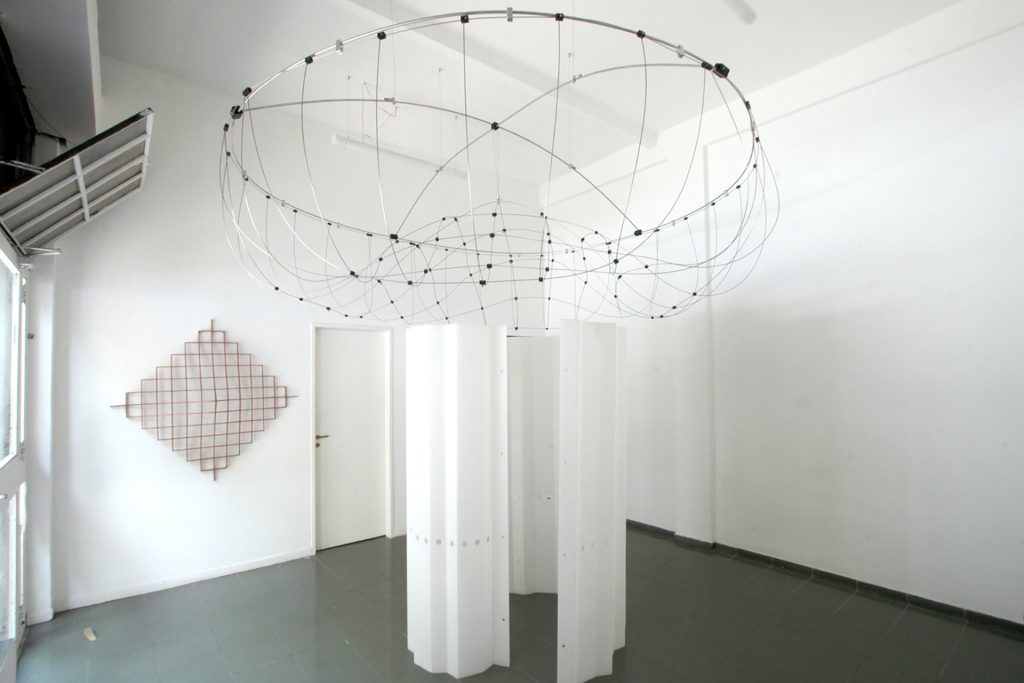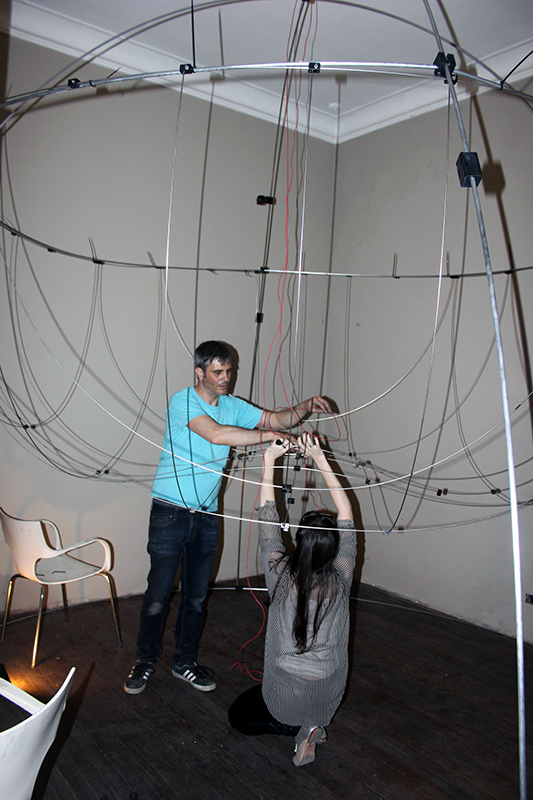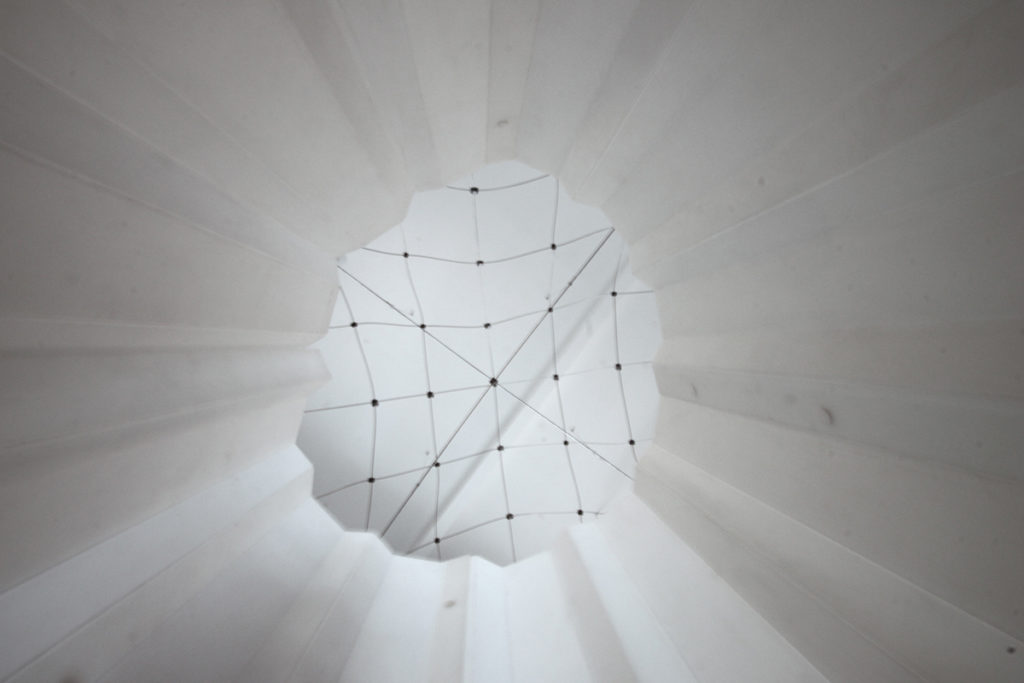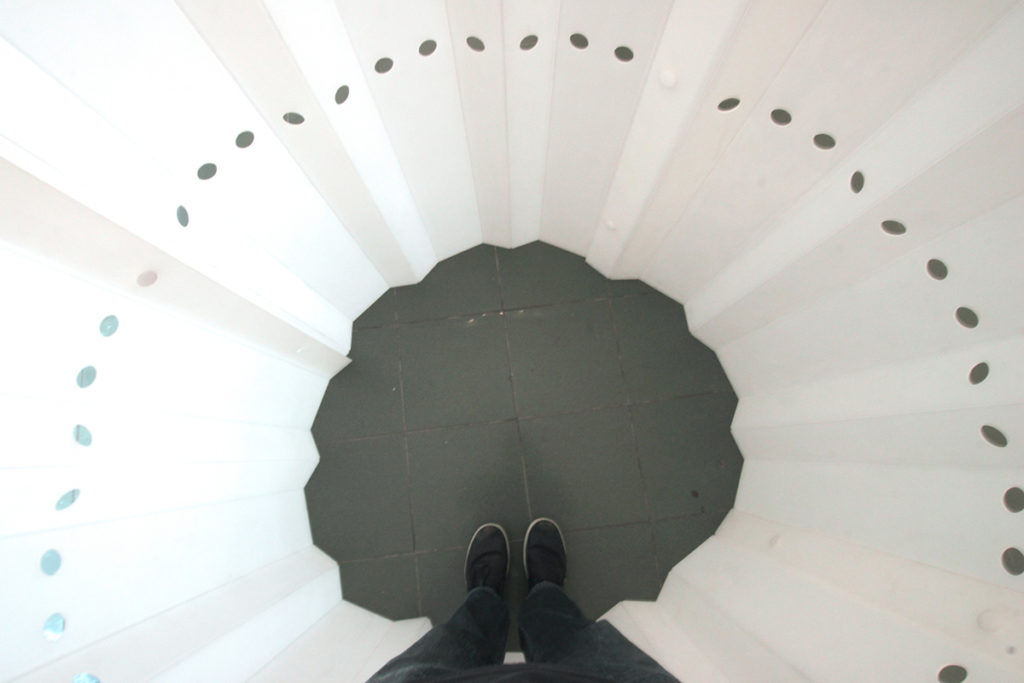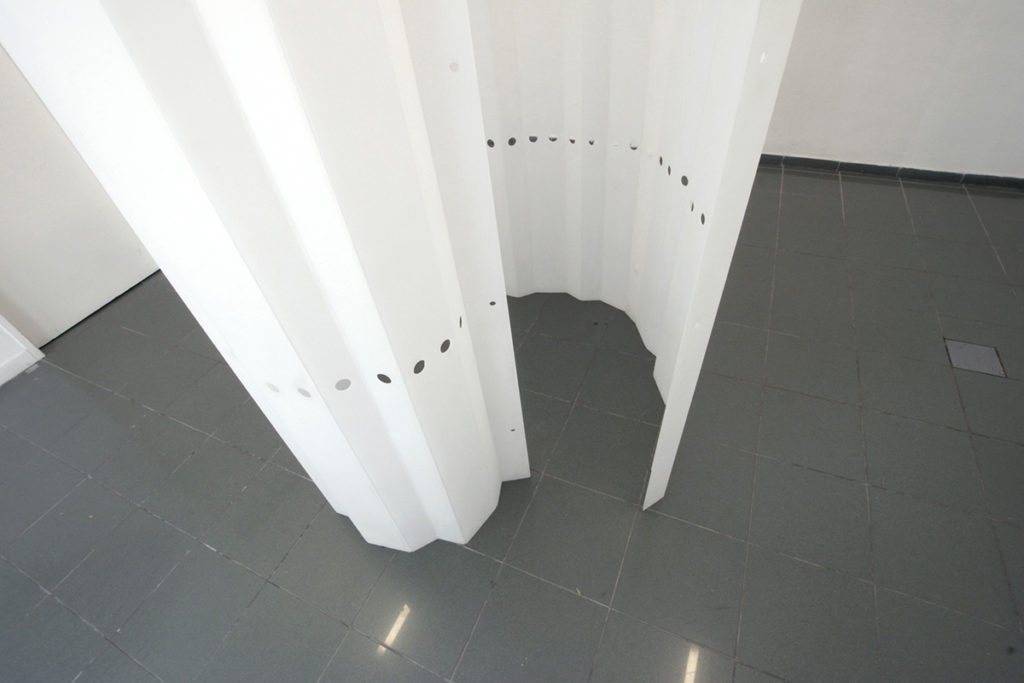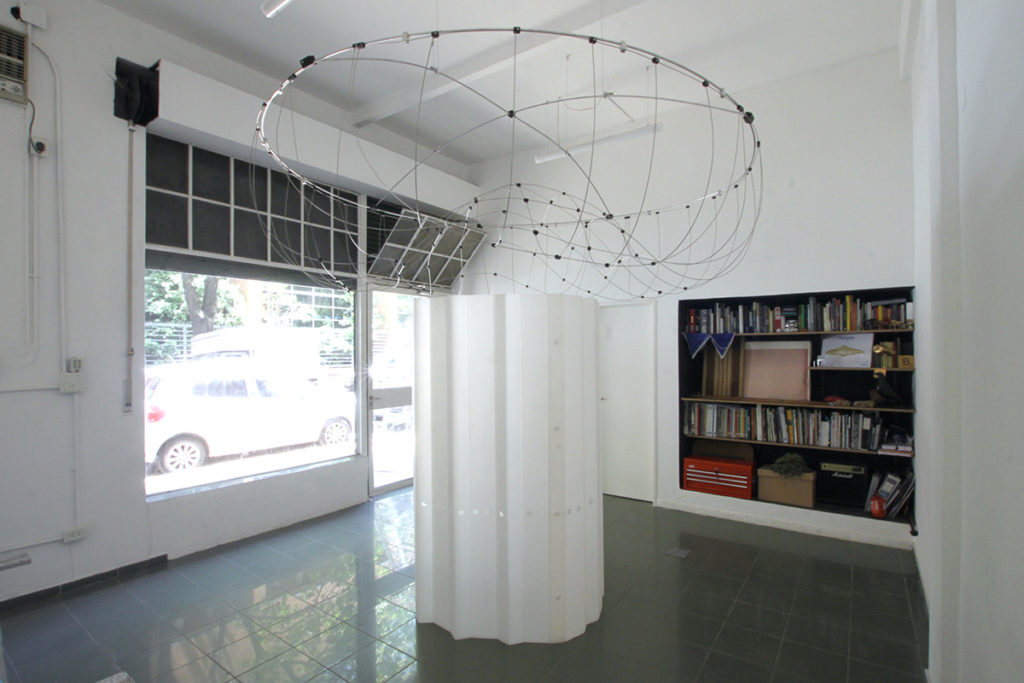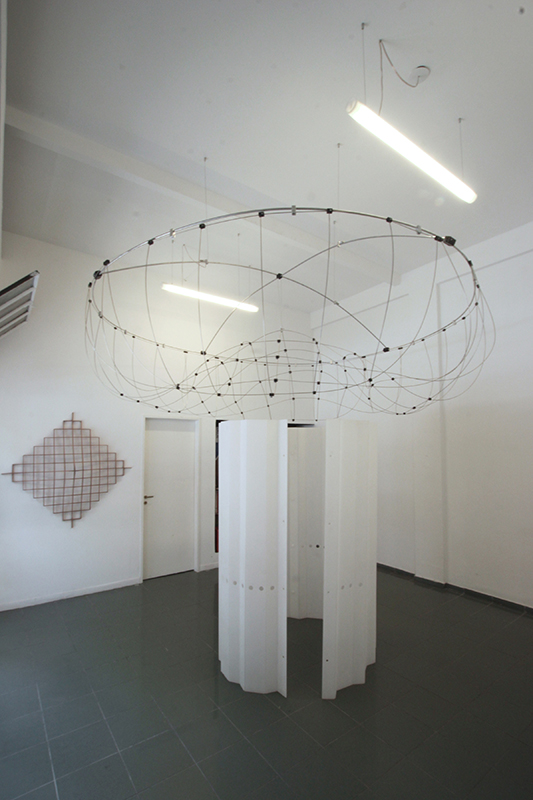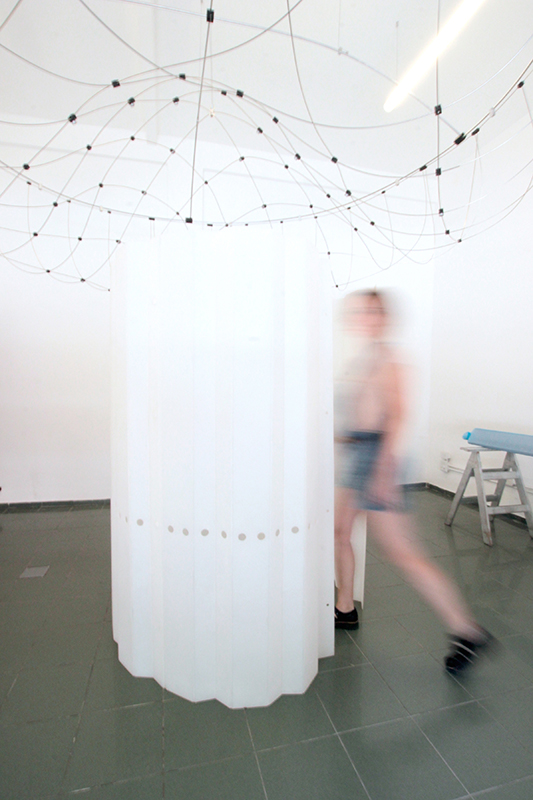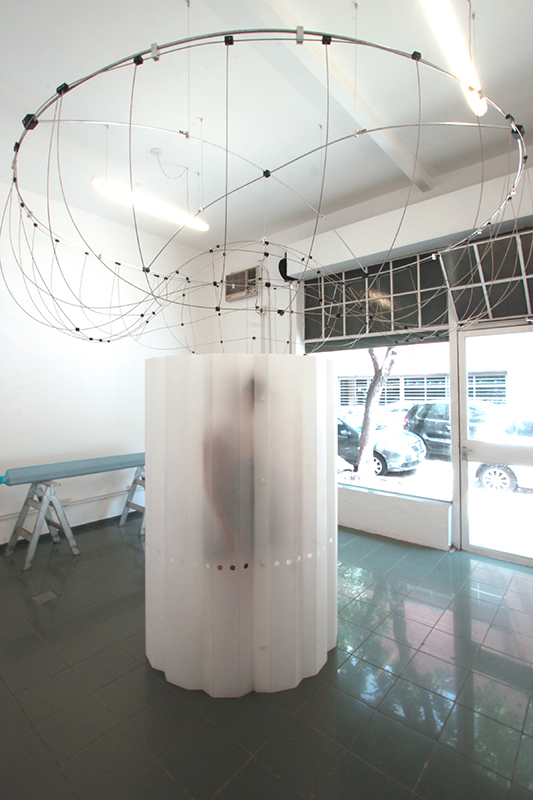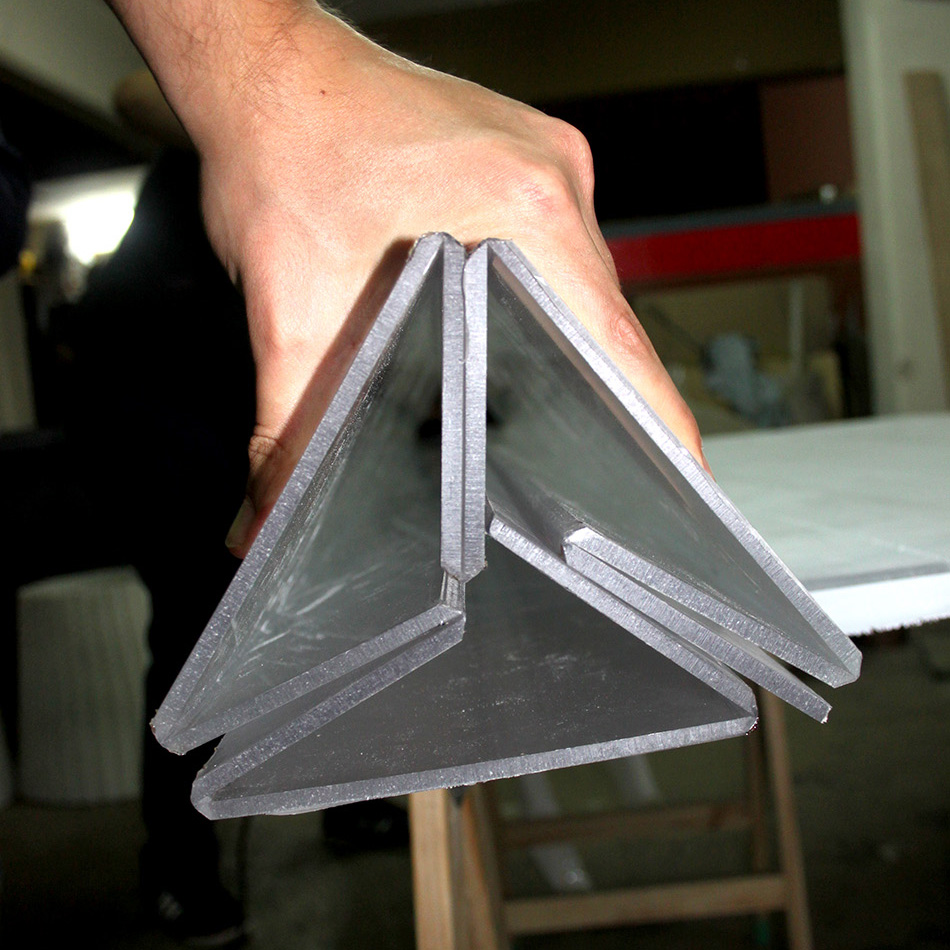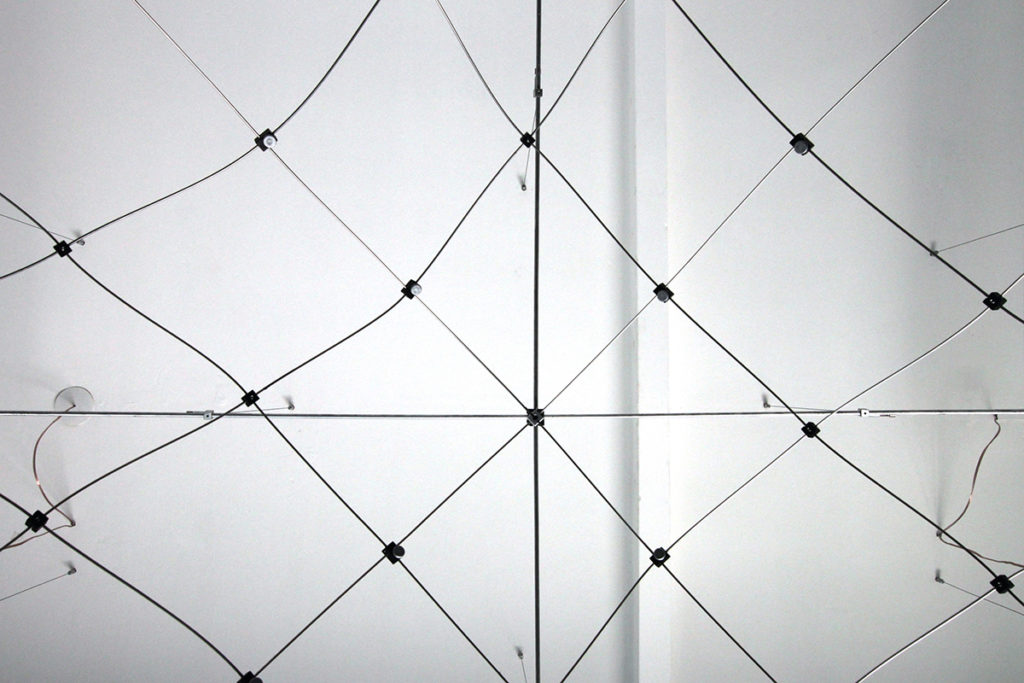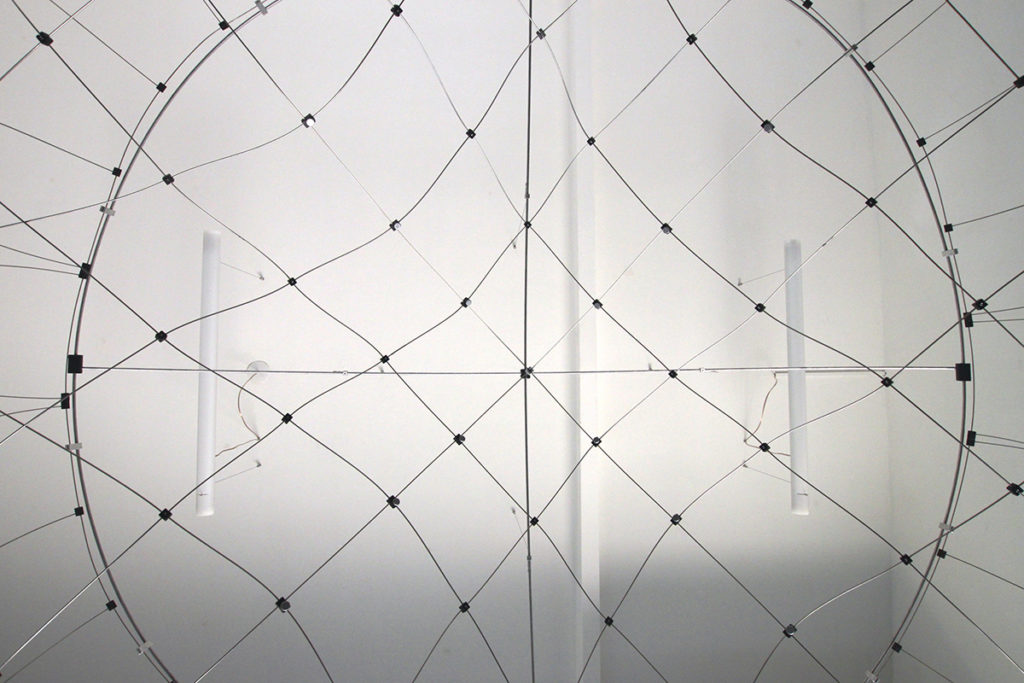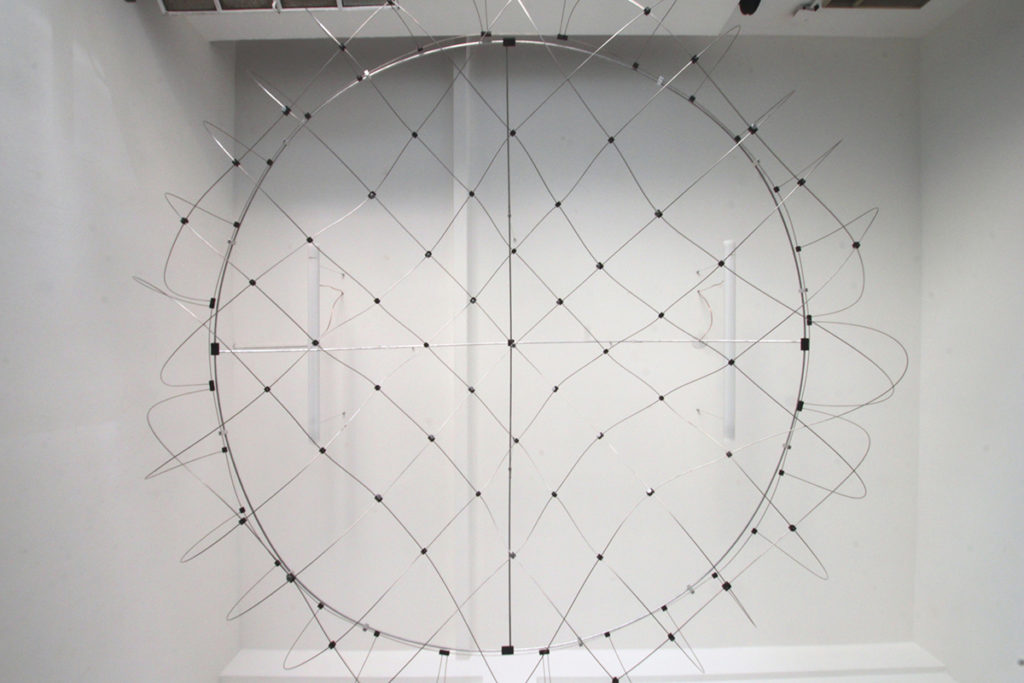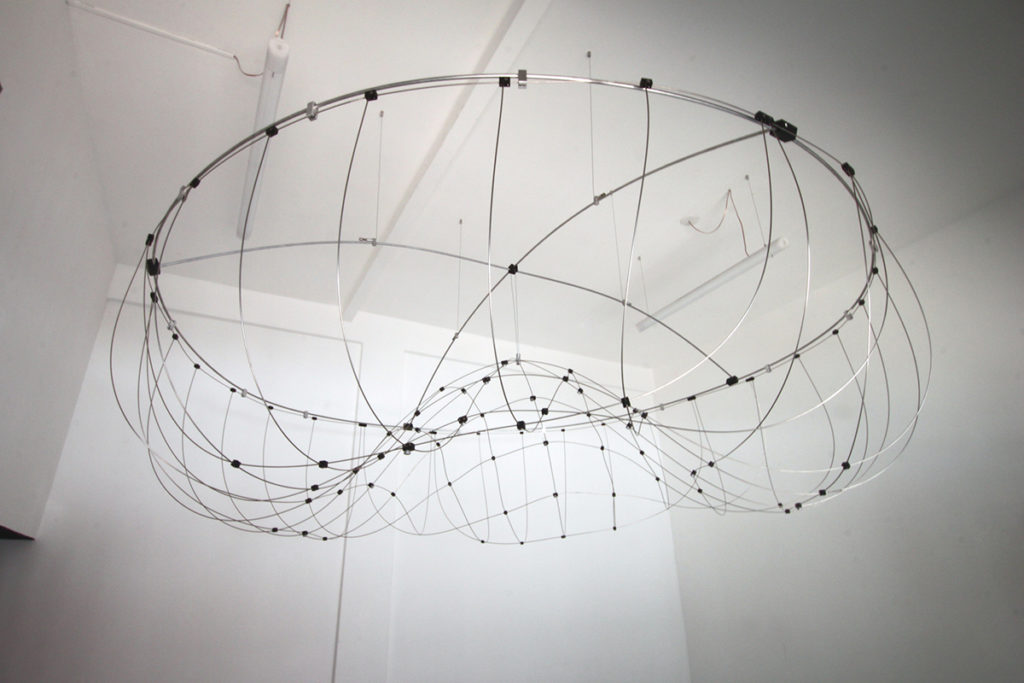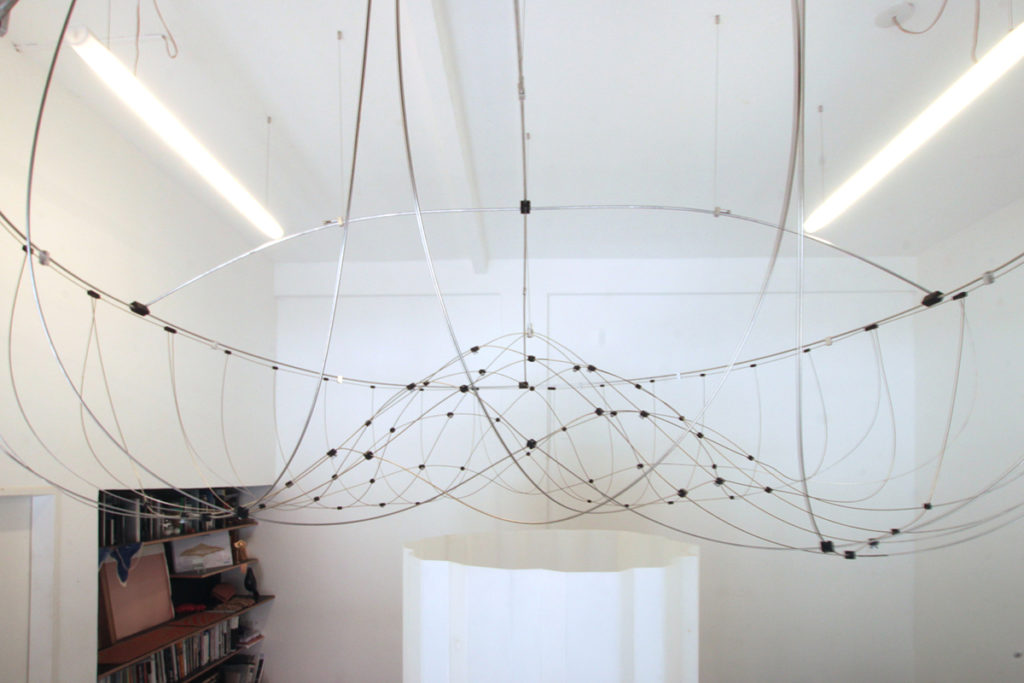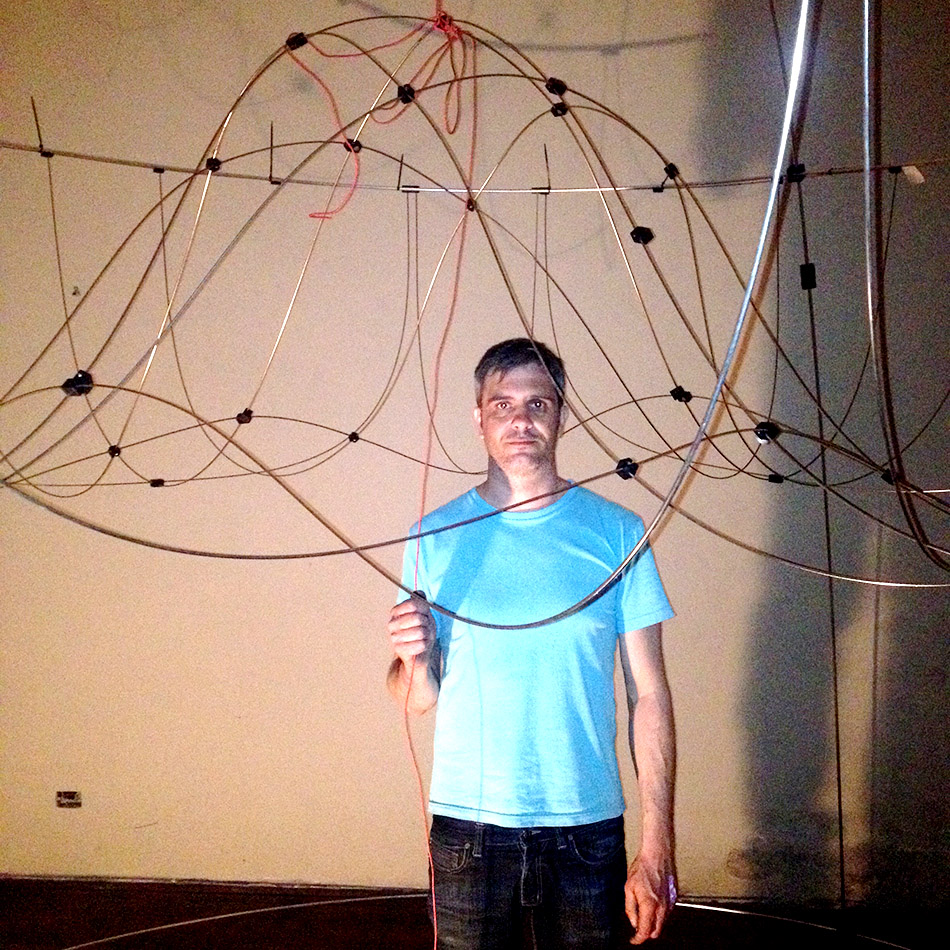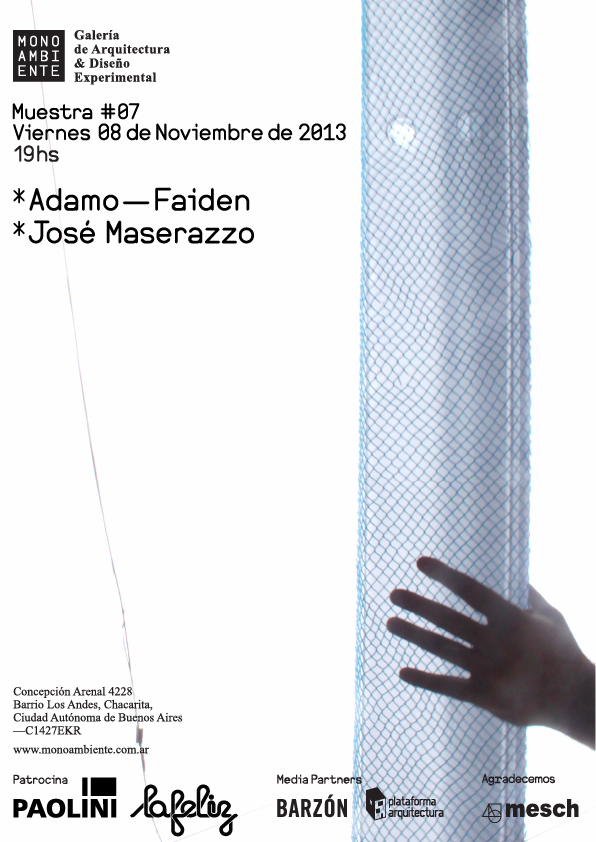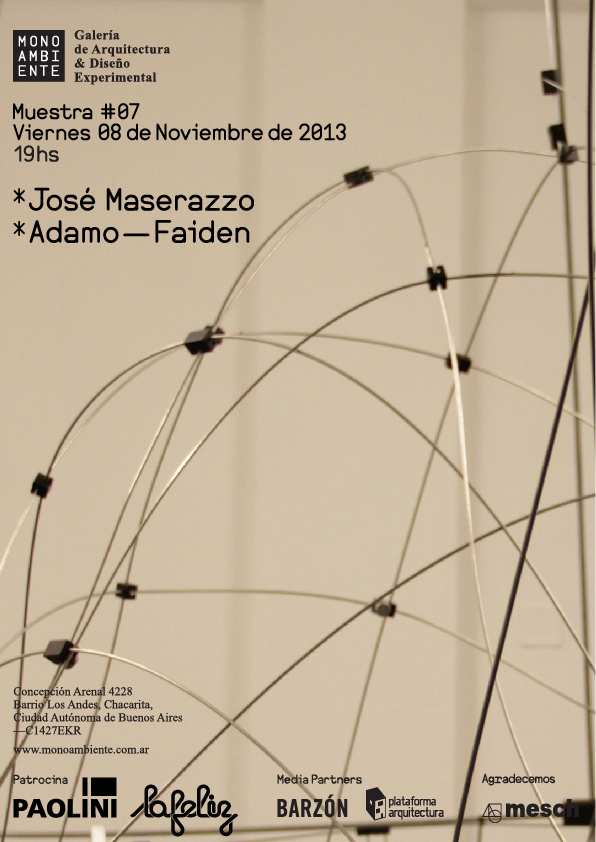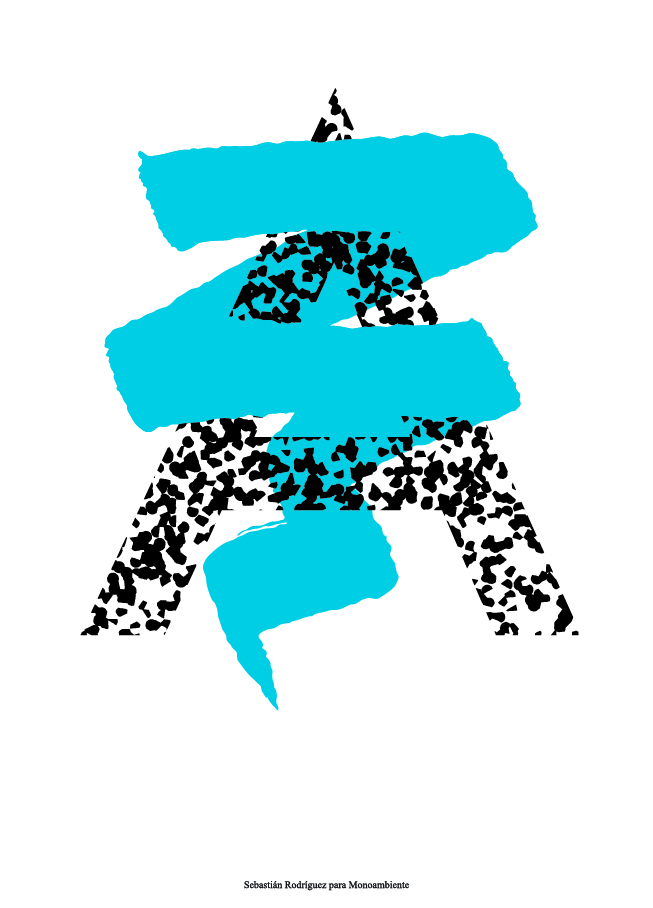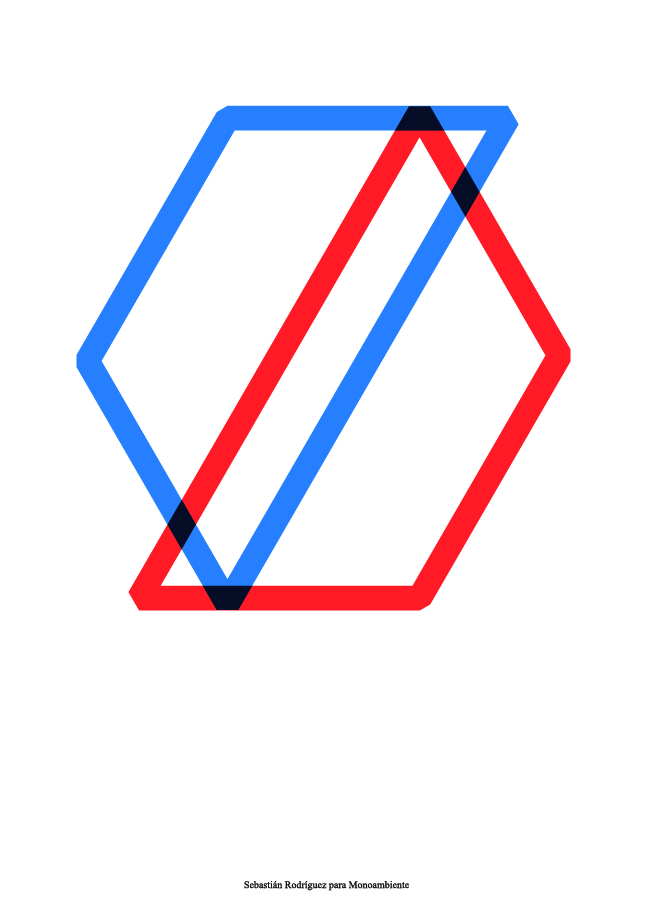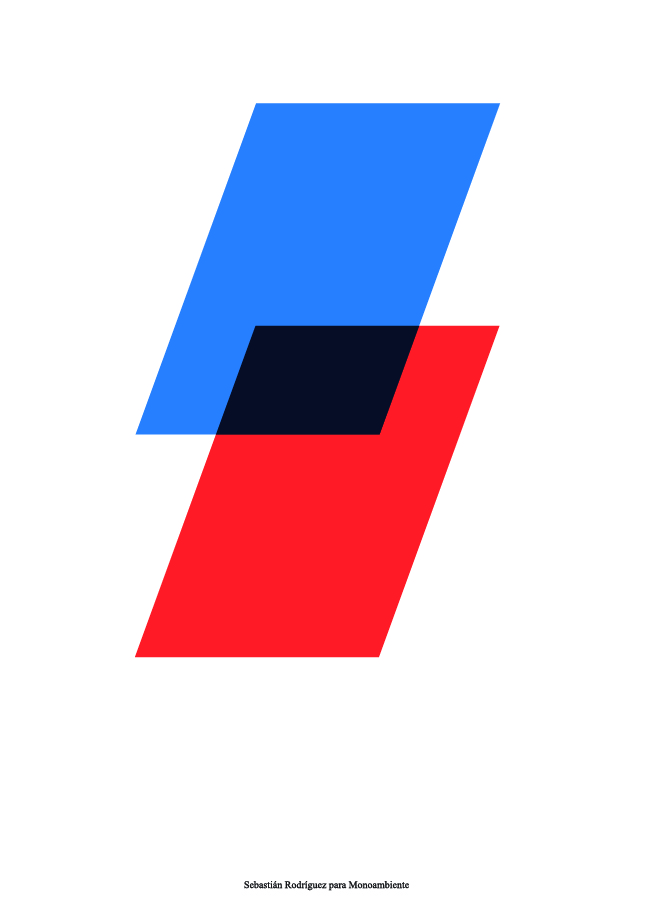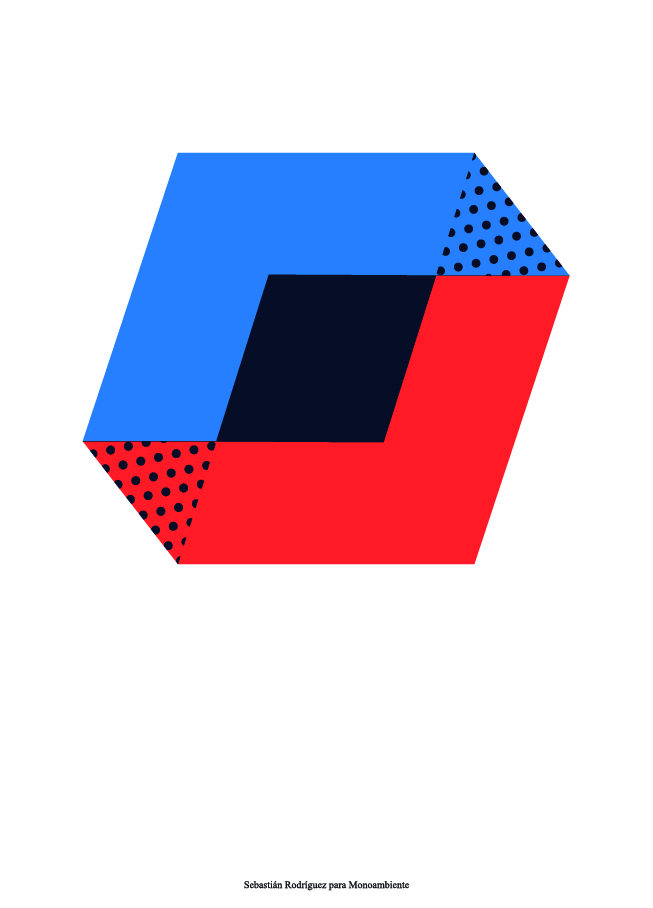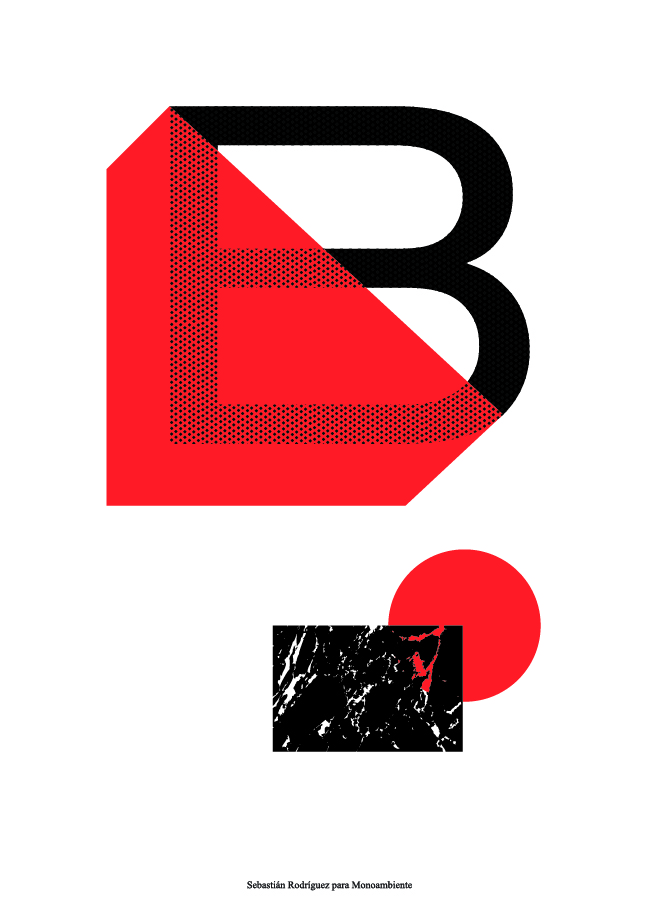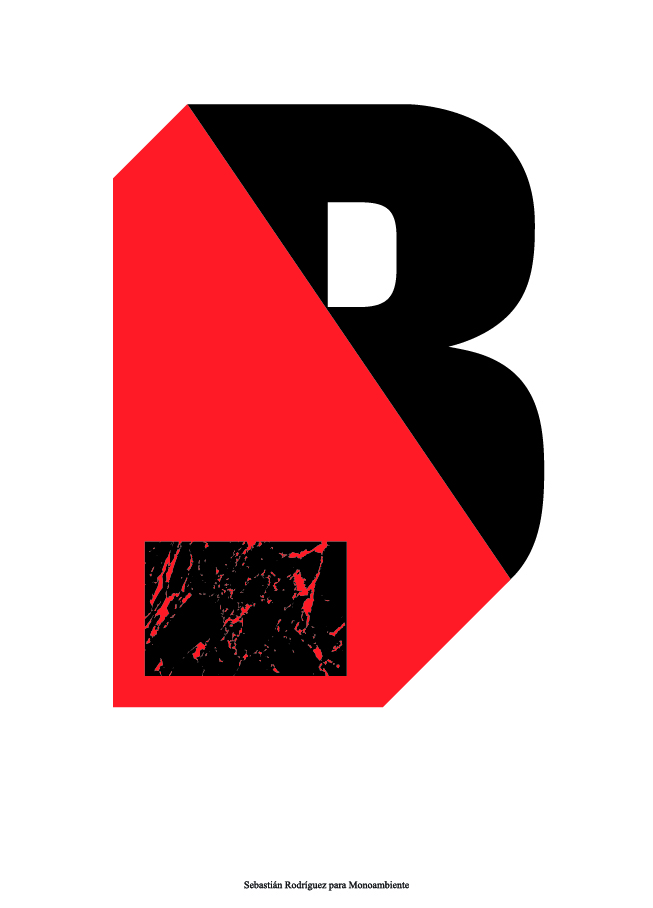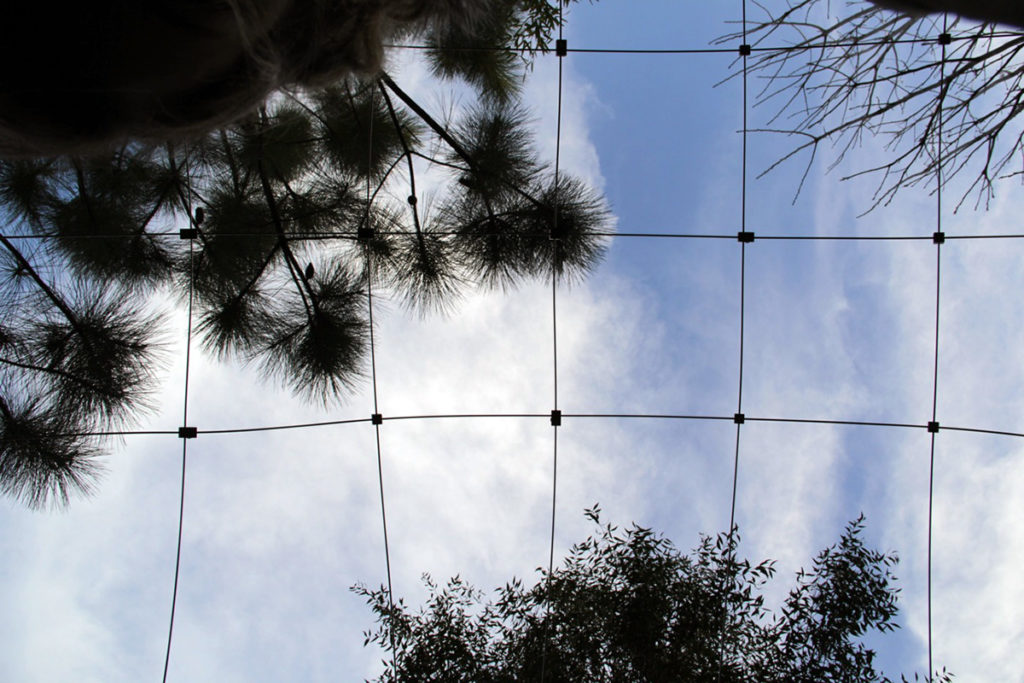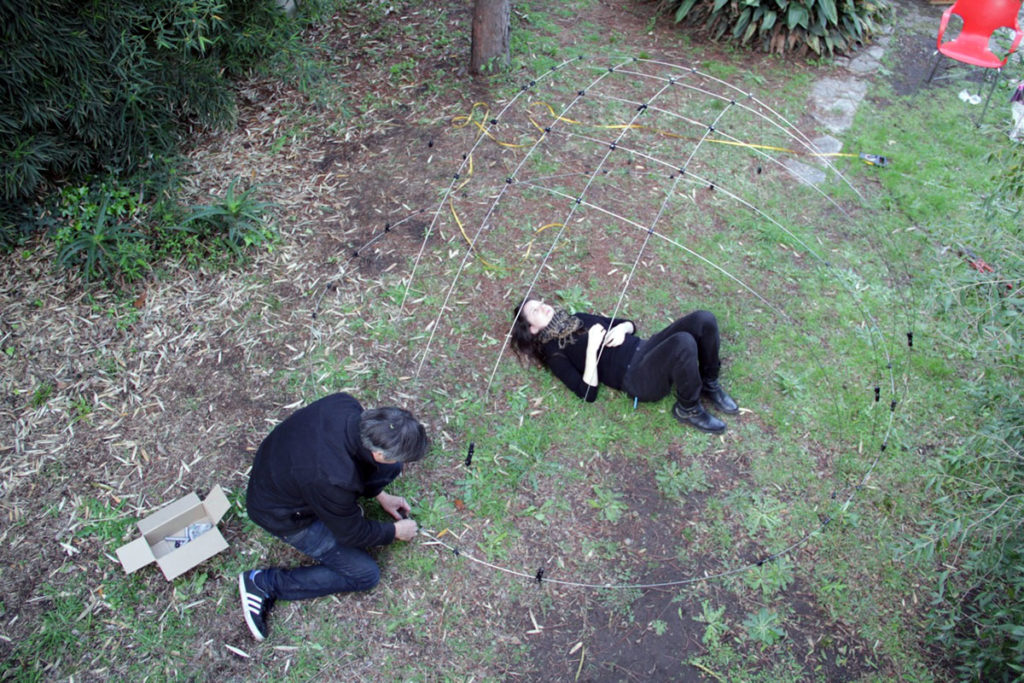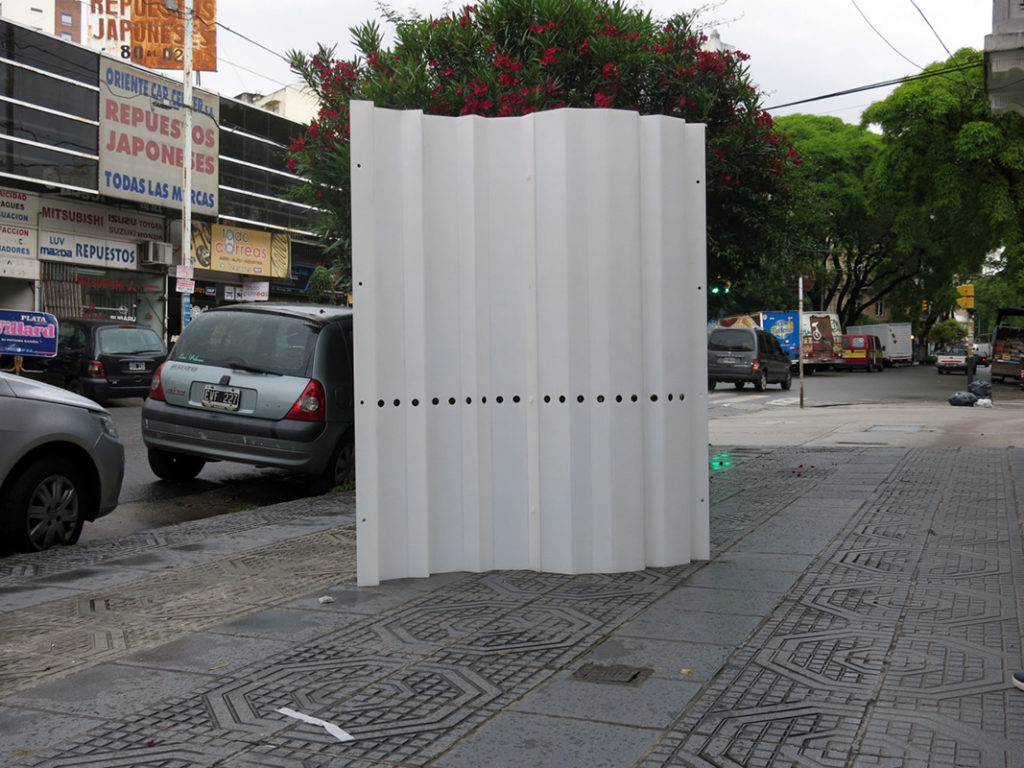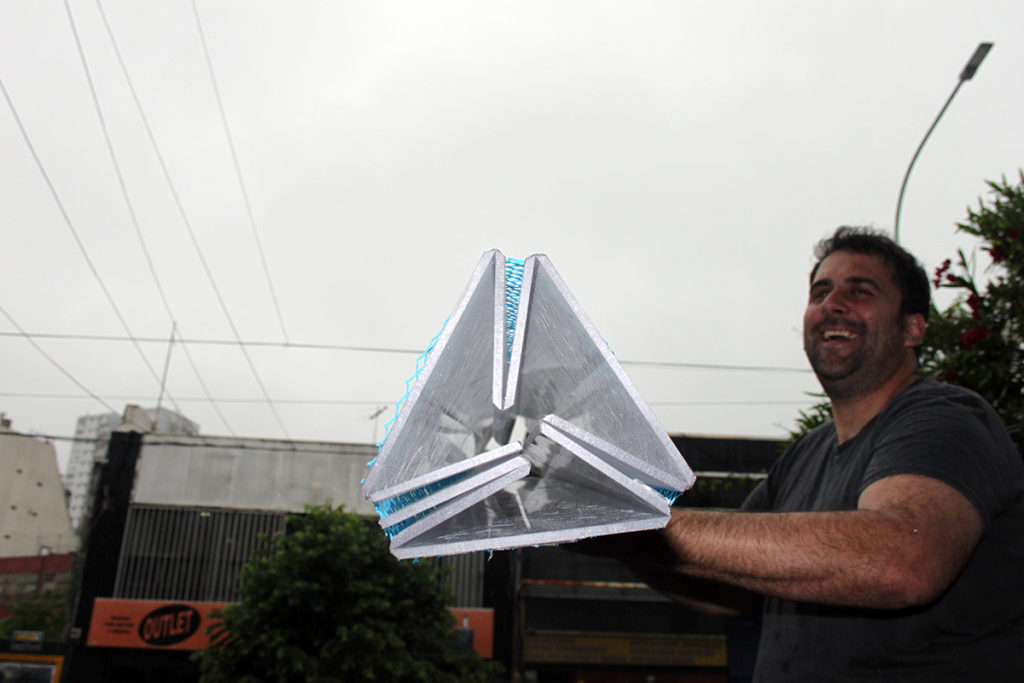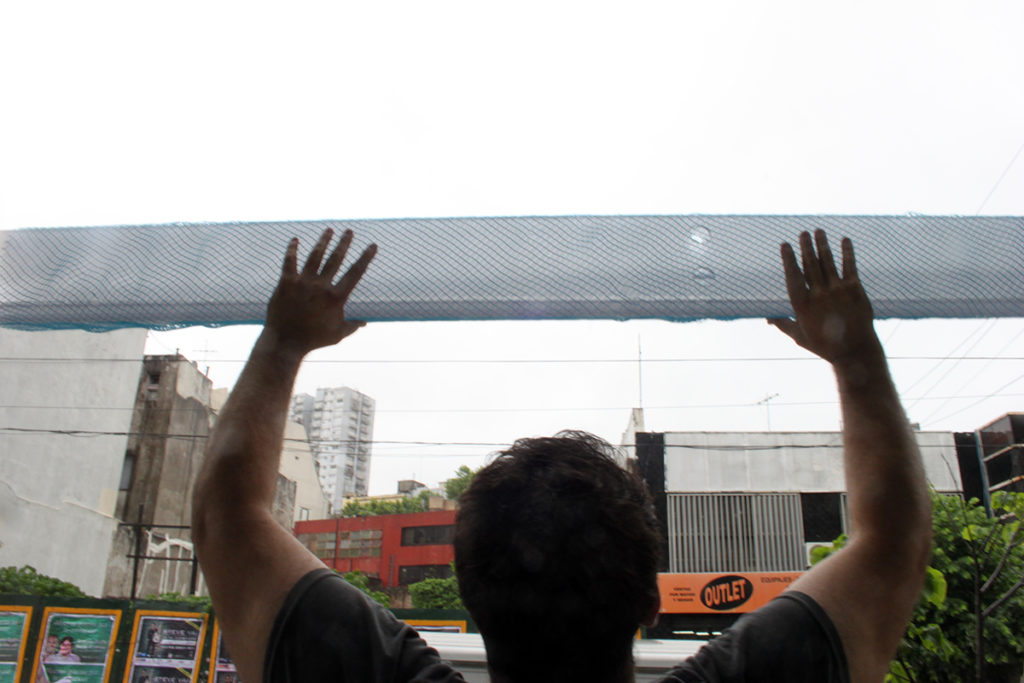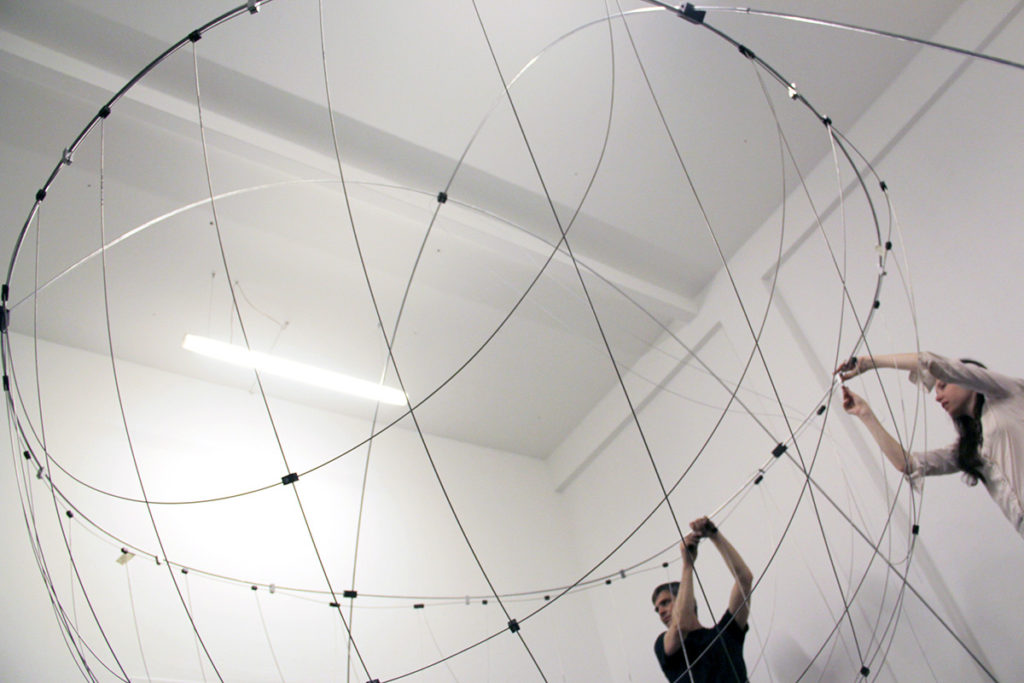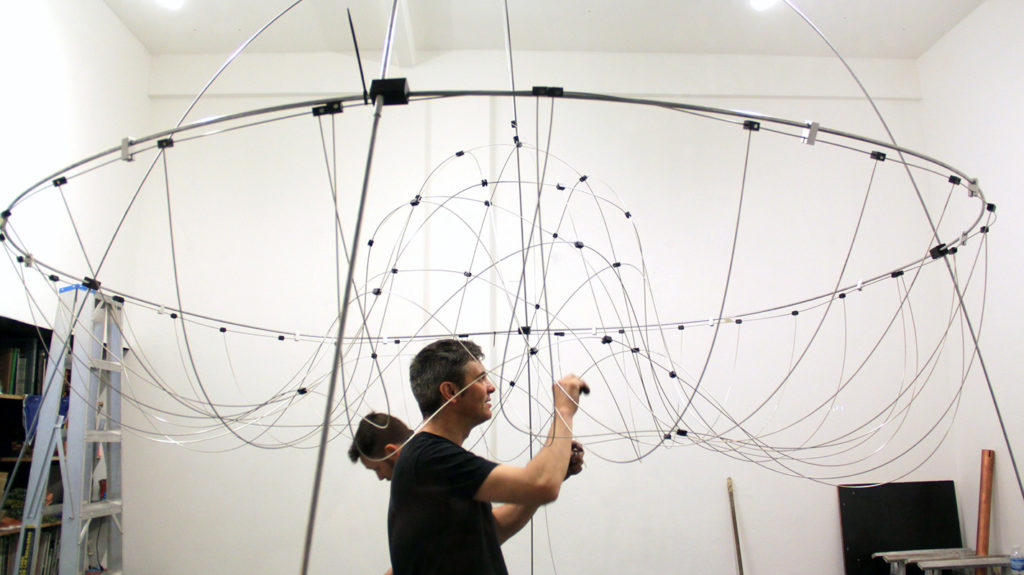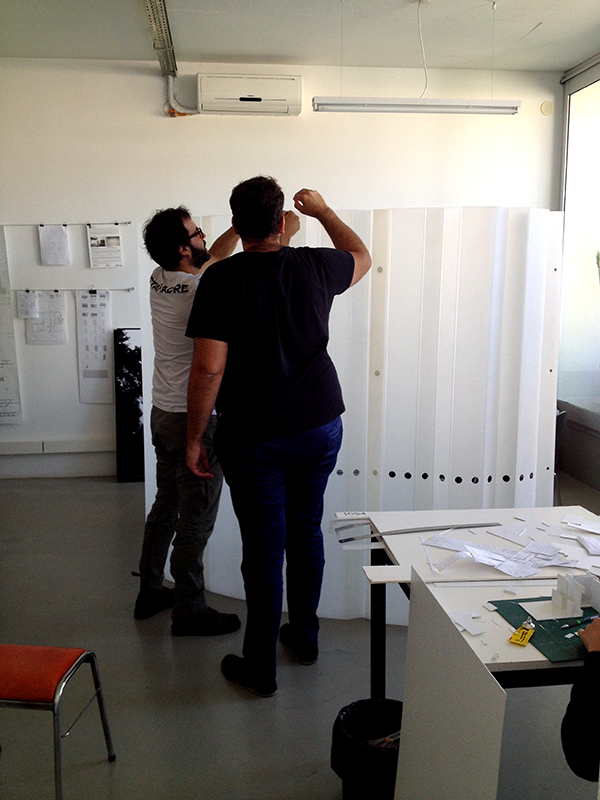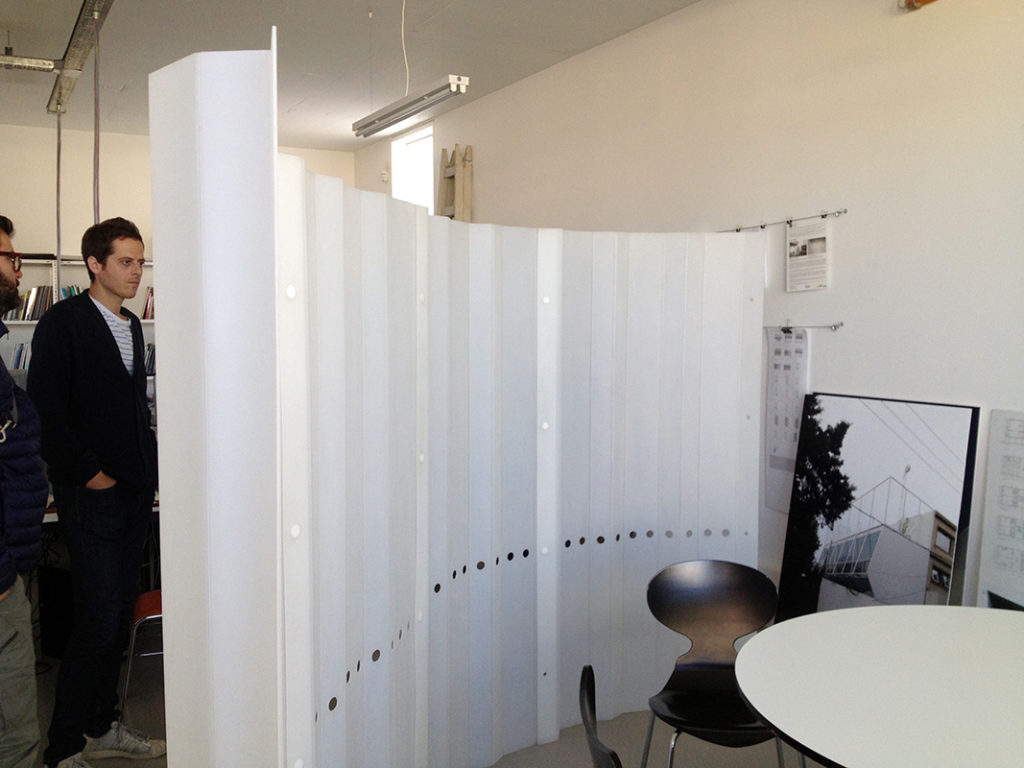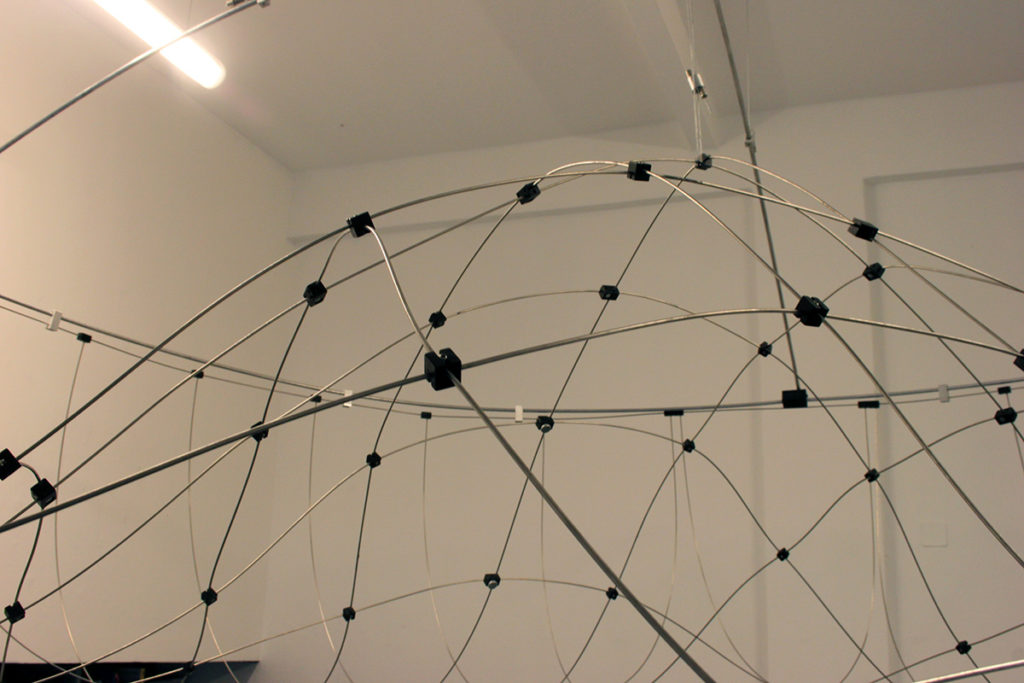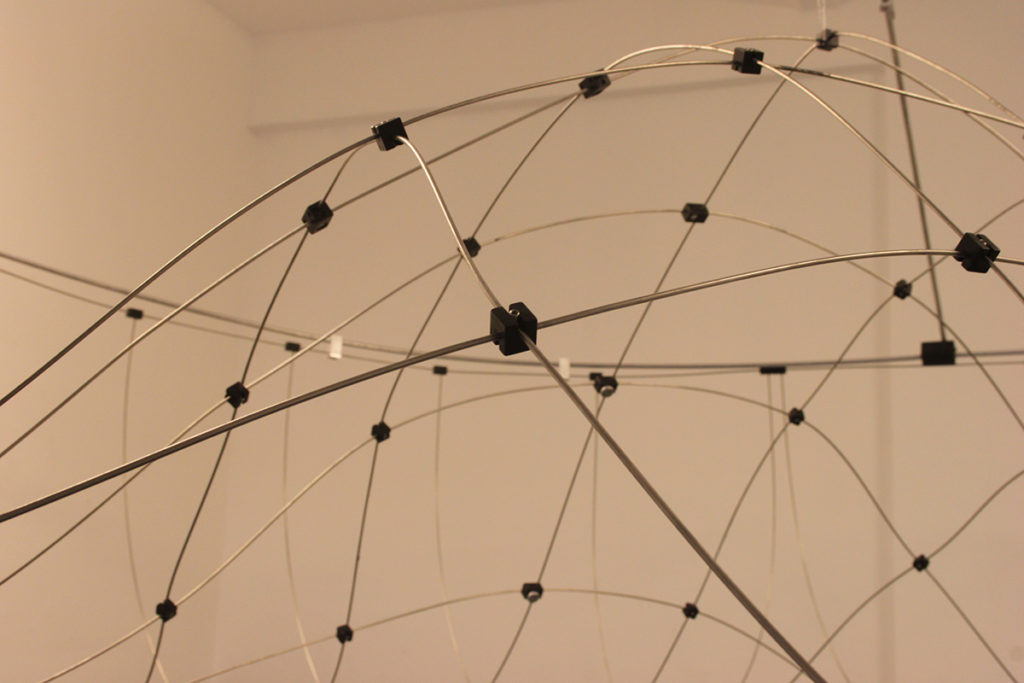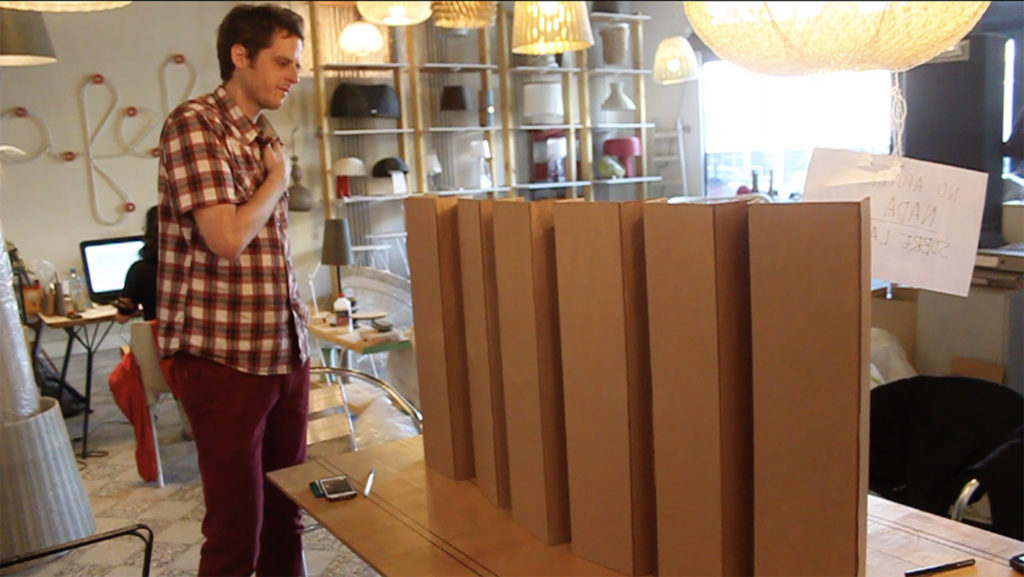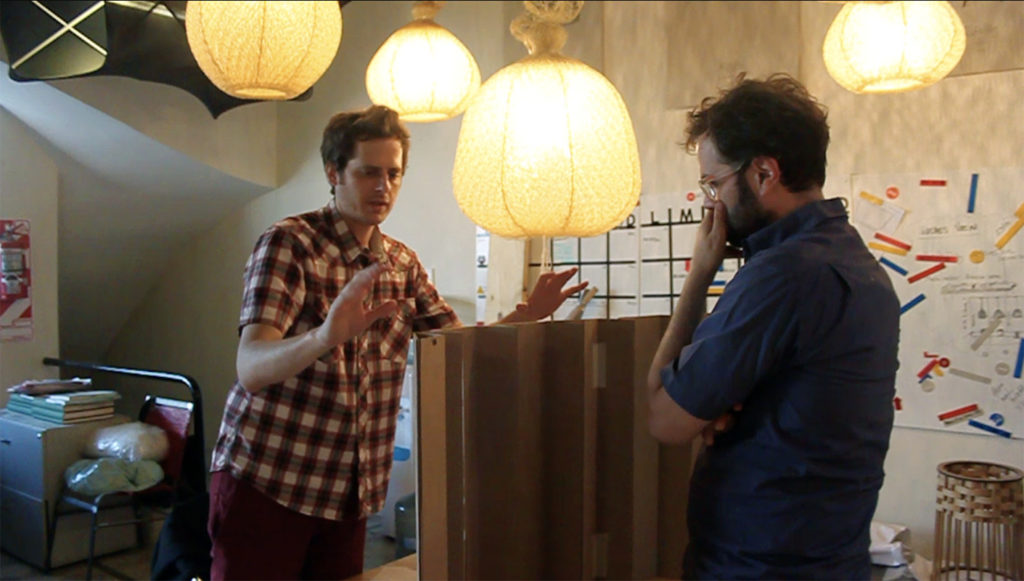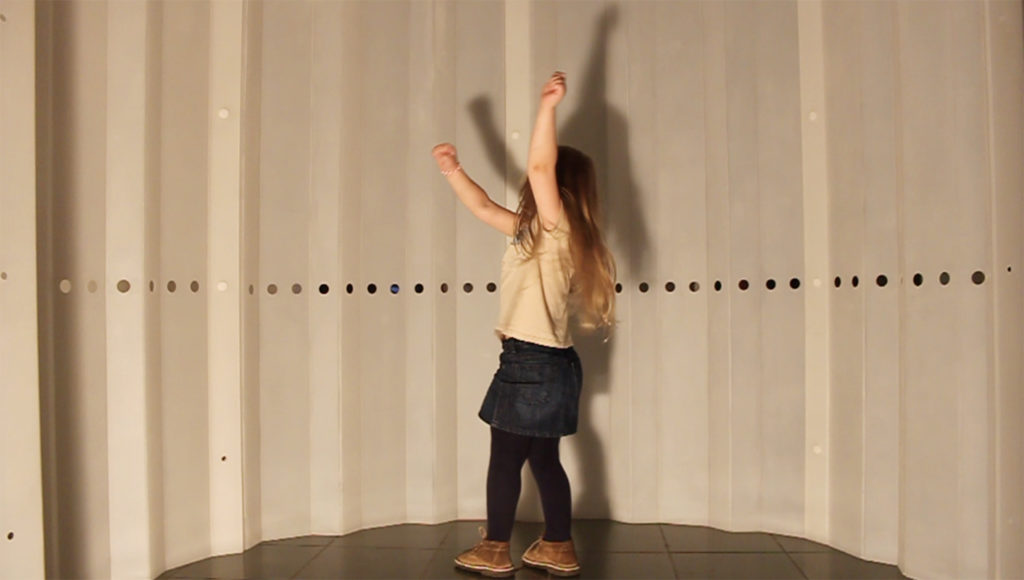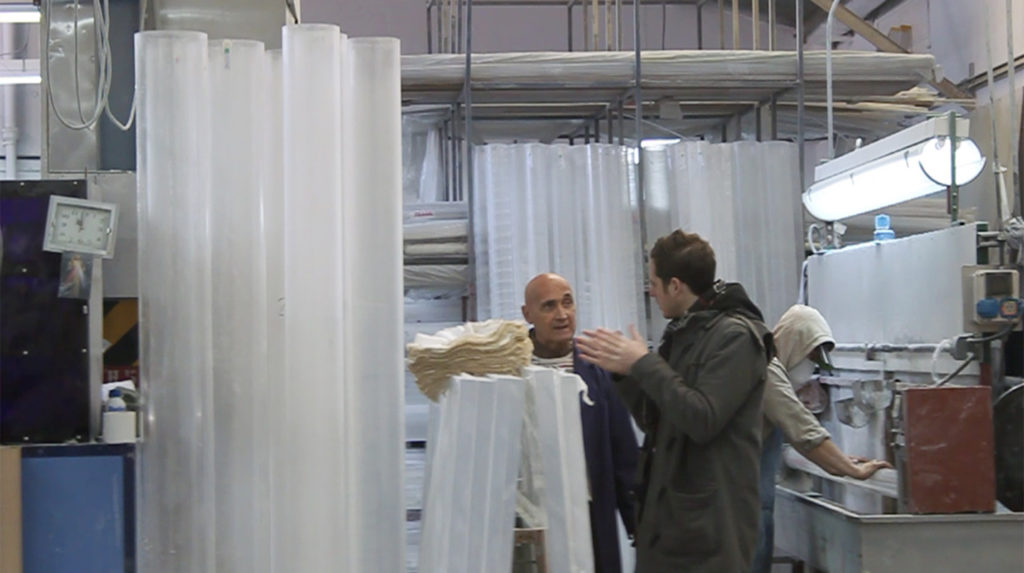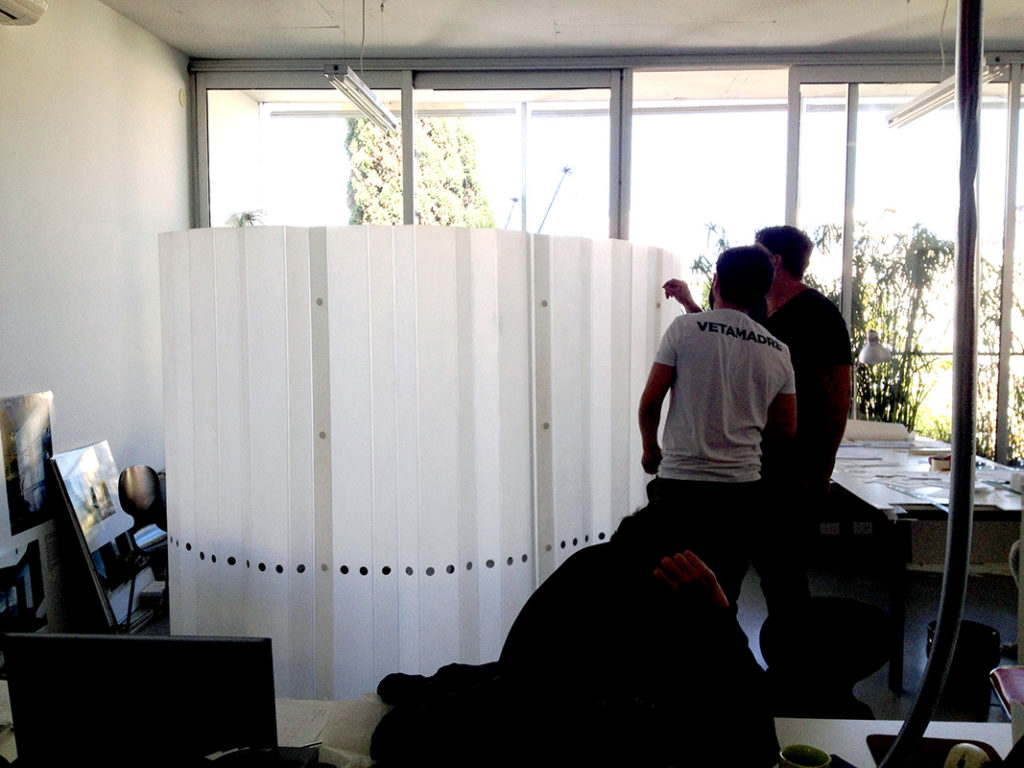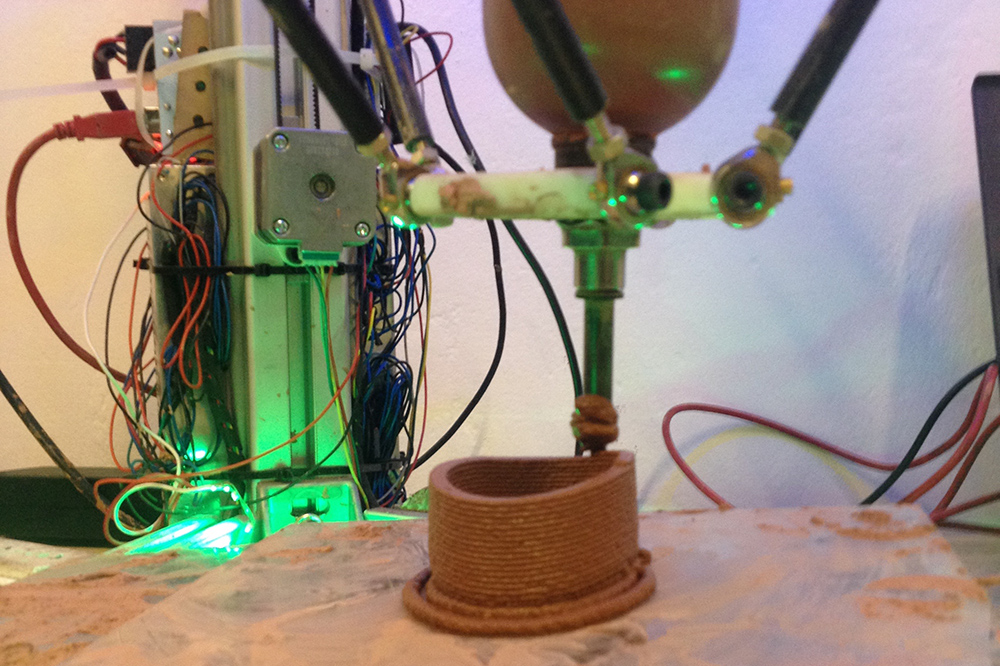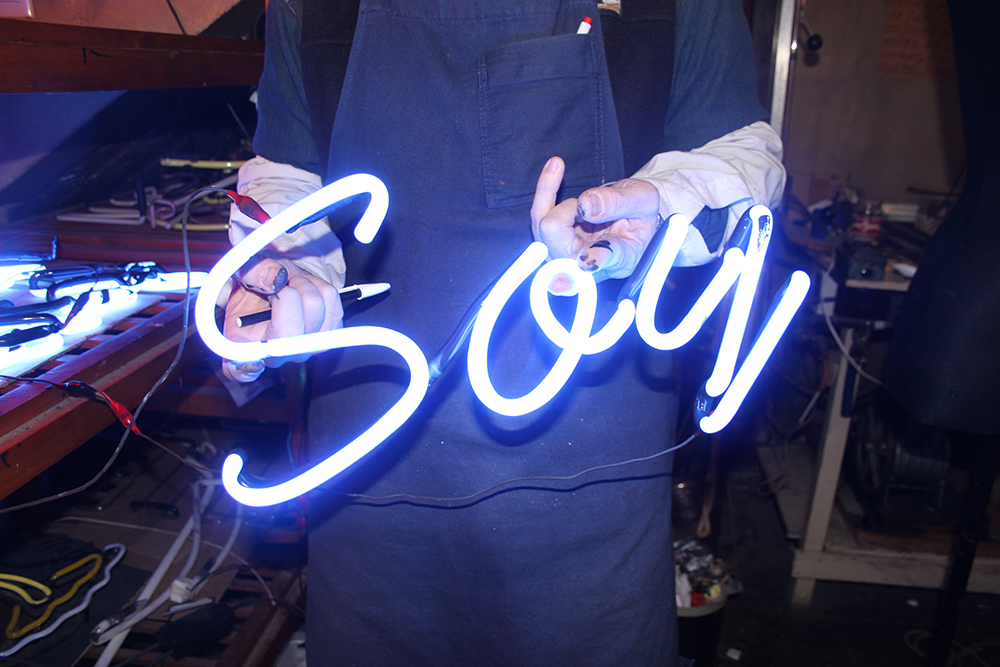
Do not think what you can do for Monoambiente, but what Monoambiente can do for you.
by Martin Huberman*
From the part to the space and from the space to the object, could be a simple summary of what was presented in Monoambiente’s Exhibition #07, which brings together unique pieces by the Adamo-Faiden studio and José Maserazzo. In both cases what is produced and exhibited is a clear dissection of the entrails of each of the participating studios, José Maserazzo’s NoDoMo, respectfully obeys the precept of Charles Ray Eames, who announced that “details are not details, they are design”. Thus, a prismatic node of black anodised aluminium is transformed into an exponential construction element through which a dome of aluminium and stainless steel rods is structured. The truncated semi-sphere that hangs from the ceiling of the gallery is the first spatial technical test of an unpublished investigation called Casa-Carpa, centred on the formal possibilities of a system of territorial occupation based on rapidly assembled detail. NoDoMo functions as a constructive prototype, which is undergoing structural defor- mation tests, where the resistance of the knots to the stresses resulting from the truncated dome is being put to the test.
This raises the question of the role of a gallery in relation to the pieces that make it up. Is Monoambiente a mere exhibition and promotion space, as it was originally conceived? Or is it rather structured as a project laboratory in which ideas of space, material and creative management are tested? Should exhibitions be an end in themselves, or are they a vehicle for the development of disciplinary culture?
Triombo, the dividing screen designed by Adamo-Faiden was born from the studio’s desire to build an object-system that functions as a complement to architecture. The translucence, minimal gestures and programmatic density in the act of dividing the void into spaces, characteristic of his architectural work, are translated into the polypropylene plate which, through modulation, marking and folding, is transformed into a self-supporting piece of unlimited configurations. The Triombo was not conceived as an installation, but as a commercial product, packable in triangular sections and stackable for display and transport. In short, the module was designed to be acquired by the general public, and thanks to the productive contribution of La Feliz in the gestation process, it is possible to think that in 2014 the studio will have its first product on the street.
Monoambiente should then be a springboard for the disciplinary leap to take place? Or a management space for the strengthening of the timid union between disciplines? After two years of life, it is still not clear what role the gallery should occupy in relation to the disciplines it hosts, it should be a space for… research, exhibition, promotion, management, union, development, promotion? What is clear to me is that if it has to occupy all these spaces, it is because there are still a lot of absences in these disciplines.
*Martin Huberman is an architect (FADU, UBA), he directs NormalTM, an architecture and design studio whose research is based on programmatic, material and spatial experimentation. In 2012 he founded Monoambiente, the first and only Architecture and Design gallery in Buenos Aires.
